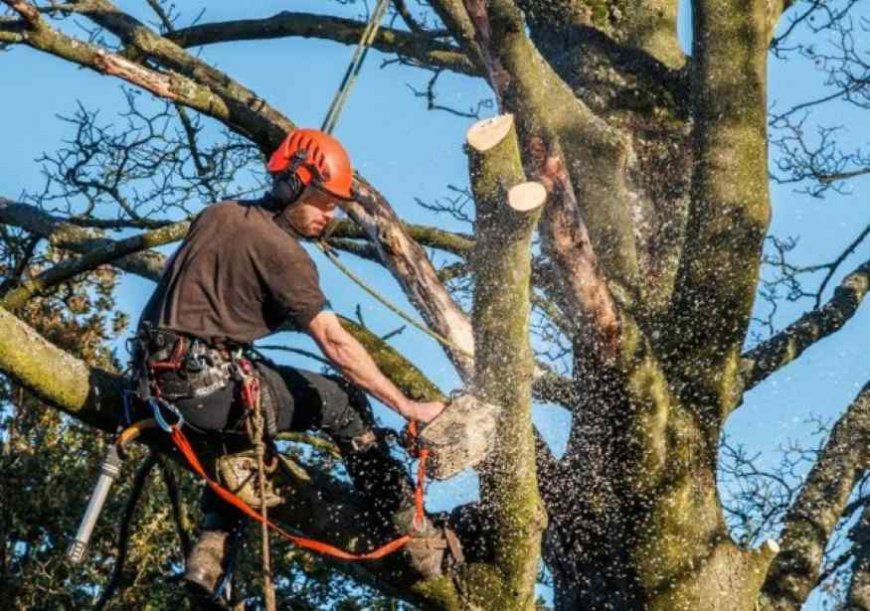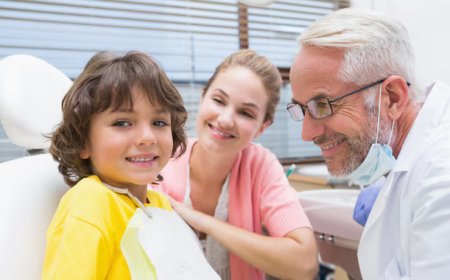Emergency Tree Removal: What to Do When Danger Strikes
Emergency tree removal isn’t something anyone plans for—but it’s a reality many face. Whether it’s storm-related damage, a sudden tree fall, or a dangerous lean, acting fast is key to keeping your home and family safe.

Emergency tree removal is the urgent process of cutting down a tree that poses an immediate threat to people, property, or public safety. Whether its storm damage, a fallen limb on a house, or a dangerously leaning trunkthis isnt the type of job that can wait.
When a tree becomes a ticking time bomb, emergency removal is the solution that brings peace of mind and prevents disaster.
Common Reasons for Emergency Tree Removal
You might not always expect it, but trees can go from majestic to menacing in no time. Here are situations that demand immediate action:
-
Storm damage: Strong winds, heavy rain, or snow can crack limbs or uproot trees completely.
-
Fallen trees: A tree that crashes onto a home, car, or power line needs urgent removal.
-
Leaning trees: A sudden or severe lean usually means root instability or internal decay.
-
Cracked trunks or limbs: These can fail at any momentespecially after storms.
-
Tree disease or infestation: If the structure is weakened enough, it may collapse with little warning.
-
Construction emergencies: Sometimes trees must be removed quickly to proceed with urgent building work.
How to Know If You Need Emergency Tree Service
Not every damaged tree requires emergency removal. But some red flags are non-negotiable:
-
A limb has broken off and is hanging dangerously
-
The tree is blocking a road or driveway
-
Its touching or threatening power lines
-
Its partially uprooted and may fall at any time
-
You hear cracking or shifting sounds during wind
If you notice any of these signs, call a professional immediatelydont wait.
What to Do Immediately After Tree Damage
1. Stay Safe
Avoid walking near or under the damaged tree. Even if it looks stable, hidden cracks can cause sudden collapse.
2. Call Emergency Tree Service
Search for licensed, insured, and local emergency tree removal experts. Time is of the essence, and local crews can arrive faster.
3. Notify the Utility Company (If Needed)
If the tree is touching power lines, dont go near it. Call the utility company immediatelytheyll shut off power and handle the hazard.
4. Take Photos for Insurance
Before cleanup begins, take clear photos of the damage. This helps with your insurance claim and documentation.
How Emergency Tree Removal Works
Step 1: Rapid Assessment
Tree experts assess the situation, identify risks, and develop a plan of actionoften within minutes.
Step 2: Safety Preparation
Workers secure the area, often using ropes, cranes, or other safety gear to stabilize the tree.
Step 3: Section-by-Section Removal
The tree is dismantled carefully to avoid additional damage to your home, vehicles, or landscaping.
Step 4: Cleanup and Disposal
Branches and debris are chipped or hauled away. Some companies include full cleanup and stump grinding.
Why You Shouldnt DIY Emergency Tree Removal
Lets be honestremoving a tree in a dangerous situation is not a weekend project.
Risks of DIY Emergency Removal:
-
Electrocution from live wires
-
Injury from falling branches or unstable trunks
-
Damage to your property from incorrect cuts
-
Lack of equipment like ropes, cranes, or climbing gear
Certified arborists are trained to handle high-risk situations quickly and safely. Trust the pros.
Cost of Emergency Tree Removal
Emergency services often come at a premiumbut for good reason.
Factors That Influence Cost:
-
Tree size and condition
-
Location (near house, fences, power lines)
-
Time of day or night (after-hours work costs more)
-
Equipment required (crane, bucket truck, etc.)
-
Extent of damage and cleanup needed
Typical Emergency Tree Removal Costs (U.S.):
-
Small tree: $300$600
-
Medium tree: $600$1,200
-
Large tree: $1,200$3,000+
Always ask for a written estimate and make sure the company is insured and certified.
Is Emergency Tree Removal Covered by Insurance?
The good news: Often, yes.
Most homeowners insurance policies cover tree removal if the tree caused damage due to a covered peril (like a storm or lightning).
Whats Usually Covered:
-
Tree removal if it damages your home, garage, or other insured structures
-
Repairs to damaged property (roof, windows, fences)
-
Emergency service costs if it was unavoidable
Whats Not Covered:
-
Preventative removal of dead trees
-
Damage due to poor maintenance
-
Removal of trees that didnt hit anything
Tip: Contact your insurer ASAP and provide documentation.
Choosing the Right Emergency Tree Service
In a rush, but still need to choose wisely? Heres your checklist:
-
? Licensed and insured
-
? Certified arborists on staff
-
? 24/7 emergency response
-
? Good online reviews or referrals
-
? Offers detailed written estimates
-
? Uses proper equipment (crane, bucket lift, etc.)
Dont just go with the first name you findverify credentials before allowing anyone near your property.
How to Prevent Emergency Tree Situations
While some tree emergencies are unavoidable, many can be prevented with regular care.
Tips to Prevent Tree Hazards:
-
Regular pruning to remove weak or dead limbs
-
Annual inspections by an arborist
-
Look for signs of disease, decay, or pest damage
-
Avoid planting large trees too close to structures
-
Stabilize young trees with proper staking
An ounce of prevention is worth a ton of emergency cleanup.
Conclusion
Emergency tree removal isnt something anyone plans forbut its a reality many face. Whether its storm-related damage, a sudden tree fall, or a dangerous lean, acting fast is key to keeping your home and family safe.
Dont risk injury or further damage. Call in the pros, get your property secure, and use the moment to plan better tree care for the future.
FAQs
1. Can I remove a tree myself in an emergency?
Unless it's very small and safe, no. Always call professionals for hazardous or storm-damaged trees.
2. How fast can emergency tree services respond?
Many offer 24/7 response and can be on-site within hourssometimes faster depending on location.
3. Will my insurance go up if I file a tree damage claim?
It depends on your policy and history, but one claim for storm damage usually doesnt spike your rates.
4. Can I trim a damaged tree instead of removing it?
If the damage is minor and the tree is stable, trimming may suffice. An arborist can assess and recommend the best course.
5. What should I do if a tree falls on my neighbors property?
Document everything, inform your insurance, and speak with your neighbor calmly. Liability often depends on the trees condition before the fall.











































